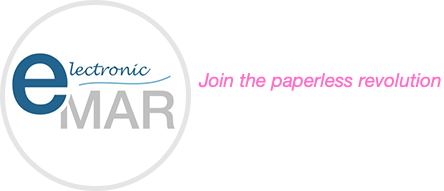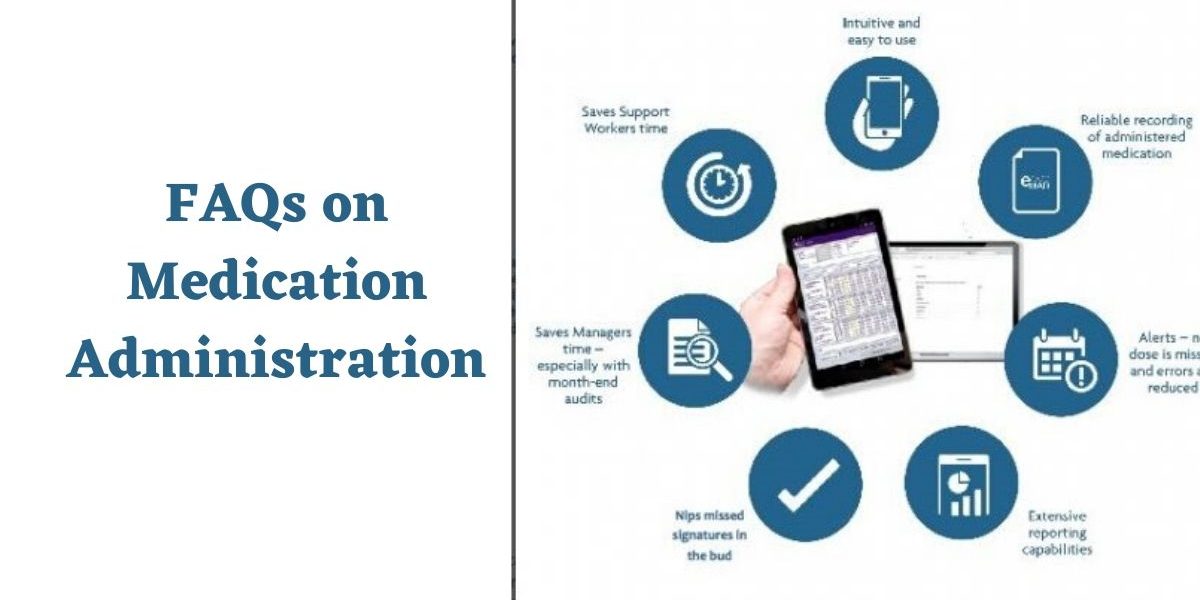Care workers give medicines or assist the residents in taking medicines in different forms ( from capsules and oral mixtures to administering inhaled medication). They are responsible for the safe administration of the medicines. But in many cases, care staff (due to lack of training or confusion arising from lack of documentation or poor instructions ) commit medication administration errors. When it comes to medication administration, there are many questions that care home workers and managers have. Over here we discuss 5 FAQs on medication administration and its safety –
Question 1: What are the different Rs of medication administration?
- Right medication
- Right patient
- Right dose
- Right route
- Right time
- Right documentation
- Right evaluation
- Right patient education
- Right assessment
Question 2: What are the common medication errors in Intravenous Medication (IV) Administration medication administration?
Administering IV medication requires a high level of competence as there are various areas where medication errors can occur: wrong volume, mixture, rate, and drug. Other risks involved with poor IV medication administration include phlebitis (inflammation of the veins), air embolism (it occurs when air bubbles enter a vein), and infiltration (leakage of medication from an IV). In fact, a hospital-based cross-sectional study found out high prevalence of IV medication errors.
Question 3: How can care homes ensure medication safety?
There are many steps to take when it comes to ensuring medication safety in care homes. One of the common medication mistakes that happen in care homes is related to drugs with similar names, similar brand names, similar looks, or similar packaging. Such medicines confuse the time-strapped care staff. To avoid any kind of medication error when handling such drugs, it’s important that the care workers carefully label the medicines in a distinct way. Another important step is to audit the MAR sheets in care homes regularly. But this can be a time-consuming process as it needs to be done manually- which is why many care homes in the UK have shifted from MAR sheets to eMAR ( electronic MAR). eMAR can monitor all of your MAR Sheets 24 hours a day, 365 days per year.
Question 4: What are the benefits of shifting from MAR to eMAR?
eMAR is a great alternative to conventional MAR sheet medication system. The electronic medical record-keeping system helps care homes lower the risks of medication errors by streamlining medication administration processes. It eliminates a lot of paperwork from the medication administration process – as a result there are less chances of medication errors related to overwriting and illegible handwriting. It also improves the operational efficiency of a care home by reducing the manual work performed by care staff such as reviewing the MAR sheets and counting medications. Watch this video to know how the care home managers in the UK are using eMAR to get a complete and precise picture of medication issued.
Question 4: Why should care home staff be particular about medicine timings? And how can care homes ensure that the residents don’t miss a dose of their medication?
Some medicines need to be given at specific times. For example, some medicines need to be taken before, with or after food or some diseases can only be controlled with very precise dose timings. To ensure that the right medicine is given to the right patient at the right timing, care homes are using digital medical administration record sheets ( eMAR).







